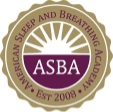What Are Oral Appliances?
Dentist-fitted oral appliances work to keep the airways open during sleep and minimize the effects of snoring and obstructive sleep apnea. When you sleep, gravity causes the tongue to fall back towards your throat and obstruct your airway, making you snore or stop breathing altogether. Oral appliances counteract this effect by:
- Pushing the jaw forward to open up the throat with a mandibular advancement device (MAD).
- Holding the tongue forward to stop blockage with a tongue-retaining device.
Benefits of Oral Appliances
Oral appliances are most effective for people with mild obstructive sleep apnea. They are also an option for people who are non-compliant with CPAP. Though CPAP is currently the most effective treatment for sleep apnea, oral appliances have some advantages over CPAP. Patients are far more likely to consistently wear their oral appliance, which fits like a retainer or a mouth-guard, than they are to wear the bulky CPAP mask.
According to a study by American Academy of Sleep Medicine, over 90% of patients still used their oral appliance regularly after the course of a year, while less than half of CPAP patients stuck to their treatment regimen. In addition, patients love that oral appliances are:
- Comfortable
- Small
- Easy to wear
- Non-invasive
Oral Appliances and Positional Therapy
If you suffer from more severe sleep apnea, using an oral appliance alone probably will not provide enough treatment. Changing the position in which you sleep can help increase the effectiveness of your appliance and decrease the severity of your sleep apnea overall.
When you lie on your back, gravity has the greatest effect on your mouth and tongue. Sleeping on your side greatly reduces the effect of gravity on your mouth and allows you to breathe and sleep easier.
If you are used to sleeping on your back, it may be difficult to change your sleeping habits. There are, however, many behavioral therapy methods that can help you get into the habit of sleeping on your side:
- Fill a sock with tennis balls and sew it to the back of your shirt.
- Sleep with a full backpack.
- Use an alarm that goes off when you roll onto your back.
When you try to roll over, the pressure of the tennis balls, the bulk of the backpack, or the noise of the alarm will remind you to stay on your side. Companies have also designed sleepwear with a positional device built-in, such as a shirt with pockets filled with inflatable balloons that work like the tennis balls. You may also find relief by elevating your head and chest while you sleep using a foam wedge pillow.
Using a positional therapy technique as well as an oral appliance will put your body in the best position for a peaceful night’s sleep. To find out more about sleep apnea oral appliances and positional therapy, please contact our experienced sleep apnea dentists at 1-847-533-8313 today to schedule your consultation.






